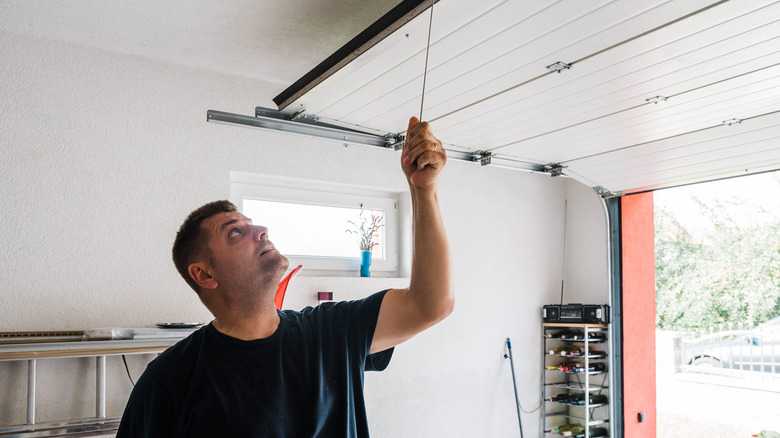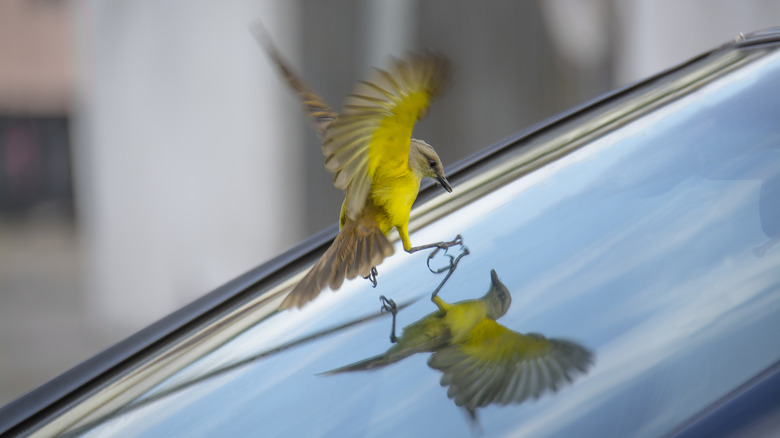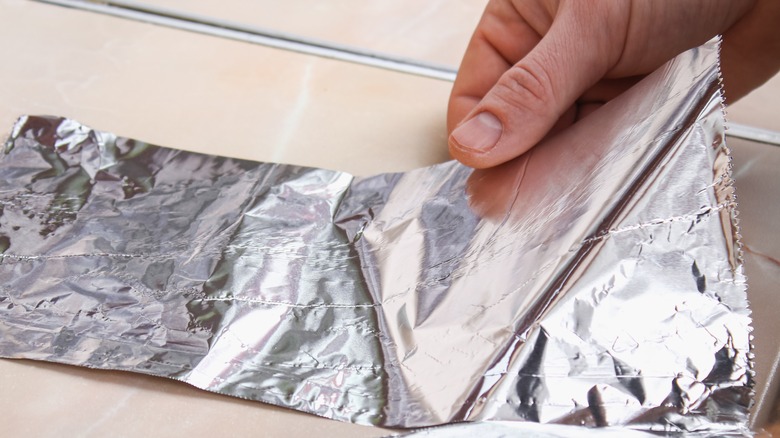Lure Birds Out Of Your Garage With These Common Household Items
You've just parked the car in the garage, walked around to the trunk, and started taking your groceries out when you hear a fluttering sound above you. You look up and see a bird flapping against the ceiling, desperately trying to find its way out. As with most common homeowner problems, prevention is the best solution to this bird-in-garage conundrum. For example, this easy paint trick might be the key to keeping birds out of your garage. Other solutions include keeping the time your garage door is open to a minimum, not storing birdseed or other food in the garage, and blocking entrances with bird nets or decoys and deterrents.
However, if you've done all this and, despite your best efforts, you end up with a bird in your garage, all is not lost! Whether you're dealing with a hummingbird or a warbler, something you already have in your house will enhance your efforts to free this frantic feathered intruder quickly and humanely: a mirror or roll of aluminum foil. Once you've darkened the interior of your garage by turning off all the lights and opening a single entrance, say, the garage door, place a mirror or sheet of aluminum foil by the entrance, angled so the sunlight outside is reflected inside. (Don't look directly at it — it's bright!) This should attract the bird to fly out the open door. Avian experts provide a few honestly pretty fascinating reasons why this method works.
Some bright bird facts
First up, birds instinctively fly toward a light source when they're somewhere dark. Placing a mirrored surface by an entryway amplifies outdoor light, creating a beacon — a bird lighthouse, if you will — that entices the bird outside. Presumably, this trick of light would be even more helpful on an overcast day. Experts also believe birds are particularly attracted to artificial lights, especially in urban areas, though exactly why is unclear. It's not a stretch to think they could mistake a flash of sunlight reflecting off a mirror or aluminum foil sheet for a bright bulb and head toward it.
That the surface is reflective fascinates our winged friends, too. Think about, for instance, how hard it can be to prevent birds from flying into your windows. Apparently, the bird mistakes the reflective window for an extension of the sky. Why not use this confounding trait to help your winged visitor escape your garage? In spring and early summer, male birds of some territorial species charge mirrored surfaces — American robins, Northern cardinals, bluebirds, California towhees, and chipping and song sparrows, most notoriously — in an attempt to fight with what they think is a rival. In fact, they're fighting their own reflection. While this could be another reason the mirror-by-the-garage-door trick works, it's decidedly unfriendly. Be sure to remove the mirror as soon as the bird has left your garage so they don't harm themselves trying to attack it.
Fly toward the light
So, how to safely help a hummingbird that's stuck in your garage — or any other bird, for that matter? Once you notice a bird in your garage, turn off overhead or extractor fans and cover up any areas where they could get trapped. Keep pets — especially cats — inside the house without access to the garage. Turn off your car if you haven't already. Close all the windows and doors and pull the blinds or drapes or cover any windows with heavy blankets or bed sheets. Locate the bird to make sure they're not sitting on the tracks, then open the garage door (typically the largest exit route in a garage) and turn off all the lights. The idea here is to make the garage interior as dark as possible.
Hang the mirror or sheet of aluminum foil on one side or both sides of the open doorway, angled so it reflects the sky and sunlight. Have someone stand inside the garage looking out as you do this — the reflective item should shine brightly. You could also leave a trail of mirrors or aluminum foil pieces on the ground leading to the door, angled to reflect the light outside. This could encourage the bird down from the ceiling, where they'll follow the trail to the door. Leave the bird alone in the quiet garage for 30 minutes to two hours. If you discover the bird at nighttime, wait until the next day to try this method.



